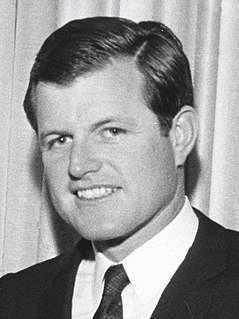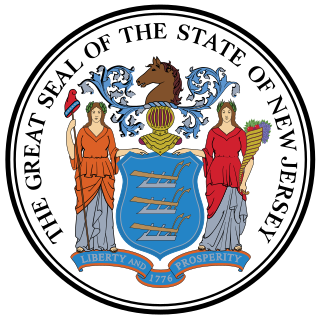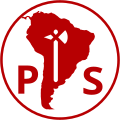
The Senate is the upper house of the bicameral Parliament of Australia, the lower house being the House of Representatives. The composition and powers of the Senate are established in Chapter I of the Constitution of Australia. There are a total of 76 Senators: 12 are elected from each of the six states regardless of population and 2 from each of the two autonomous internal territories. Senators are popularly elected under the single transferable vote system of proportional representation.

The Parliament of Northern Ireland was the Home Rule legislature of Northern Ireland, created under the Government of Ireland Act 1920, which sat from 7 June 1921 to 30 March 1972, when it was suspended with the introduction of Direct Rule. It was abolished under the Northern Ireland Constitution Act 1973.
The Australia Party was a minor political party established initially in 1966 as the Liberal Reform Group. As the Australia Party they became influential, particularly in the landmark 1972 federal election when their preferences assisted the Australian Labor Party to victory – ending 23 years of Liberal/Country Coalition government.
The three classes of United States Senators are made up of 33 or 34 Senate seats each. The purpose of the classes is to determine which Senate seats will be up for election in a given year. The three groups are staggered so that senators in one of the groups are up for election every two years, rather than having all 100 seats up for election at once. For example, the 33 Senate seats of class 1 were up for election in 2018, the elections for the 33 seats of class 2 will take place in 2020, and the elections for the 34 seats of class 3 will be held in 2022.

The Senate of the Republic, constitutionally Chamber of Senators of the Honorable Congress of the Union, is the upper house of Mexico's bicameral Congress.

The Texas Senate is the upper house of the Texas State Legislature. There are 31 members of the Senate, representing single-member districts across the U.S. state of Texas, with populations of approximately 806,000 per constituency, based on the 2010 U.S. Census. There are no term limits, and each term is four years long. Elections are held in even-numbered years on the first Tuesday after the first Monday in November. In elections in years ending in 2, all seats are up for election. Half of the senators will serve a two-year term, based on a drawing; the other half will fill regular four-year terms. In the case of the latter, they or their successors will be up for two-year terms in the next year that ends in 0. As such, in other elections, about half of the Texas Senate is on the ballot. The Senate meets at the Texas State Capitol in Austin. The Republicans currently control the chamber, which is made up of 19 Republicans and 12 Democrats.

The Senate of Puerto Rico is the upper house of the Legislative Assembly of Puerto Rico, the territorial legislature of Puerto Rico. The Senate, together with the House of Representatives of Puerto Rico, control the legislative branch of the government of Puerto Rico.

The 1970 United States Senate elections was an election for the United States Senate, taking place in the middle of Richard Nixon's first term as President. The Democrats lost a net of three seats, while the Republicans and the Conservative Party of New York picked up one net seat each, and former Democrat Harry F. Byrd Jr. was re-elected as an independent.

The 1968 United States Senate elections were elections for the United States Senate which coincided with the presidential election. Although Richard Nixon won the presidential election narrowly, the Republicans picked up five net seats in the Senate. Republicans would gain another seat after the election when Alaska Republican Ted Stevens was appointed to replace Democrat Bob Bartlett.
The Senate was the upper house of the Parliament of South Africa between 1910 and its abolition from 1 January 1981, and between 1994 and 1997.

The Division of Robertson is an Australian electoral division in the state of New South Wales. The division was proclaimed in 1900, and was one of the original 65 divisions to be contested at the first federal election. The division was named after Sir John Robertson, the fifth Premier of New South Wales.
Bert Brown was a Canadian senator and retired farmer and development consultant who resided in Balzac, Alberta.

Elections in California are held to fill various local, state and federal seats. In California, regular elections are held every even year ; however, some seats have terms of office that are longer than two years, so not every seat is on the ballot in every election. Special elections may be held to fill vacancies at other points in time. Recall elections can also be held. Additionally, statewide initiatives, legislative referrals and referenda may be on the ballot.
Timothy McAuliffe was a Labour Party and politician from County Westmeath in Ireland. He was a senator for 18 years between 1961 and 1983.

The 1968 South Carolina United States Senate election was held on November 5, 1968, to select the U.S. Senator from the state of South Carolina. Incumbent Democratic Senator Fritz Hollings easily defeated Republican state senator Marshall Parker in a rematch of the election two years earlier to win his first full term.

The 1970 United States Senate election in Massachusetts was held on November 3, 1970. The incumbent Democratic Senator Ted Kennedy defeated his challengers. This was Kennedy's first election run since the 1969 Chappaquiddick incident. Kennedy won 62.2% of the electoral votes, down from 74.3% that he won in the previous election in 1964, indicating that Chappaquiddick did affect his election popularity.
This is a list of members of the Australian Senate from 1968 to 1971. Half of its members were elected at the 5 December 1964 half Senate election and had terms due to finish on 30 June 1971; the other half were elected at 25 November 1967 half Senate election and had terms due to finish on 30 June 1974. The process for filling casual vacancies was complex. While senators were elected for a six year term, people appointed to a casual vacancy only held office until the earlier of the next election for the House of Representatives or the Senate.

The United States Senate is the upper chamber of the United States Congress, which along with the United States House of Representatives—the lower chamber—comprises the legislature of the United States. The Senate chamber is located in the north wing of the Capitol, in Washington, D.C.

The 178th New York State Legislature, consisting of the New York State Senate and the New York State Assembly, met from January 8, 1969, to April 20, 1970, during the eleventh and twelfth years of Nelson Rockefeller's governorship, in Albany.

The 1969 New Jersey gubernatorial election was held on November 4, 1969. Republican nominee William T. Cahill defeated Democratic nominee Robert B. Meyner with 59.66% of the vote.





















